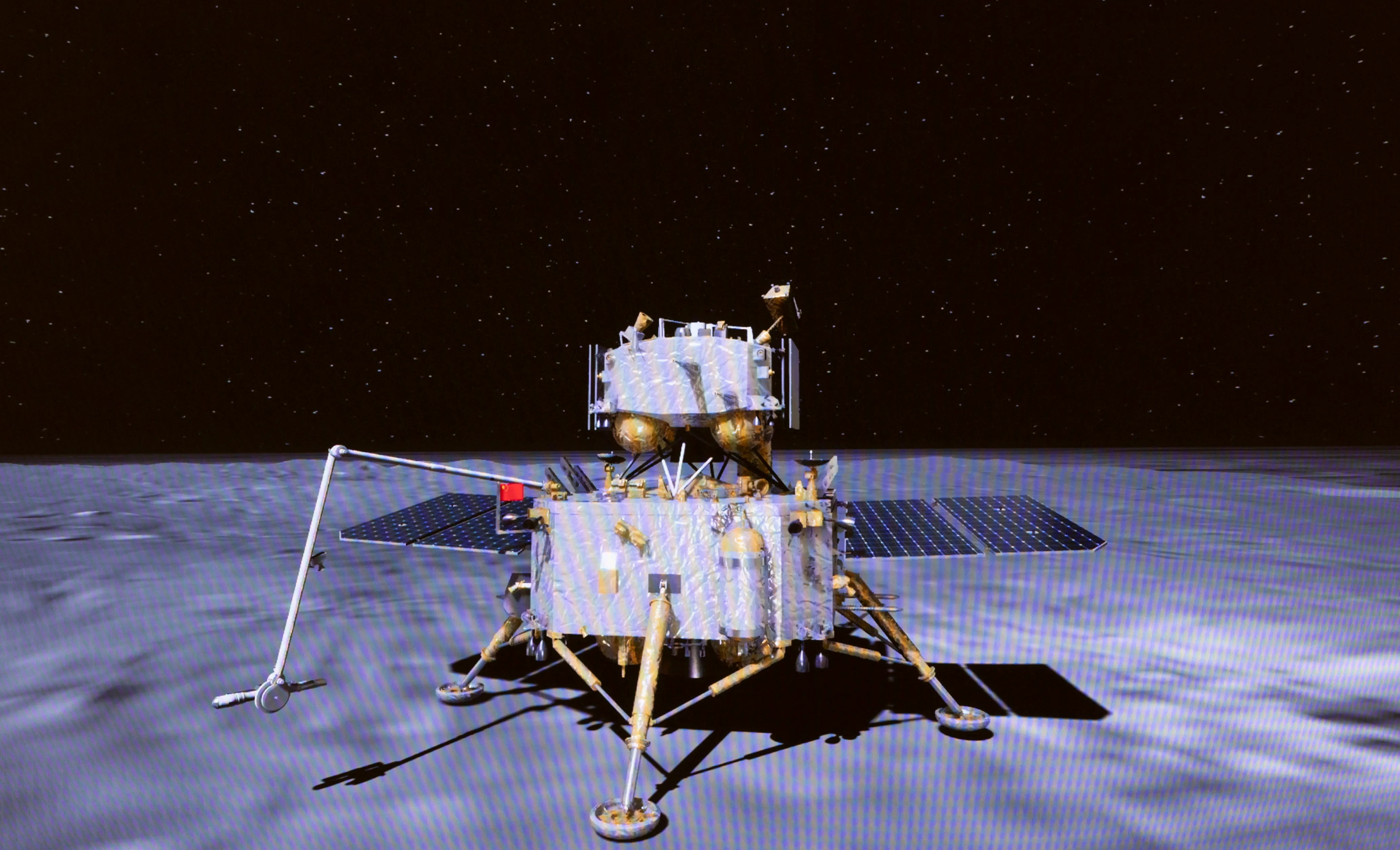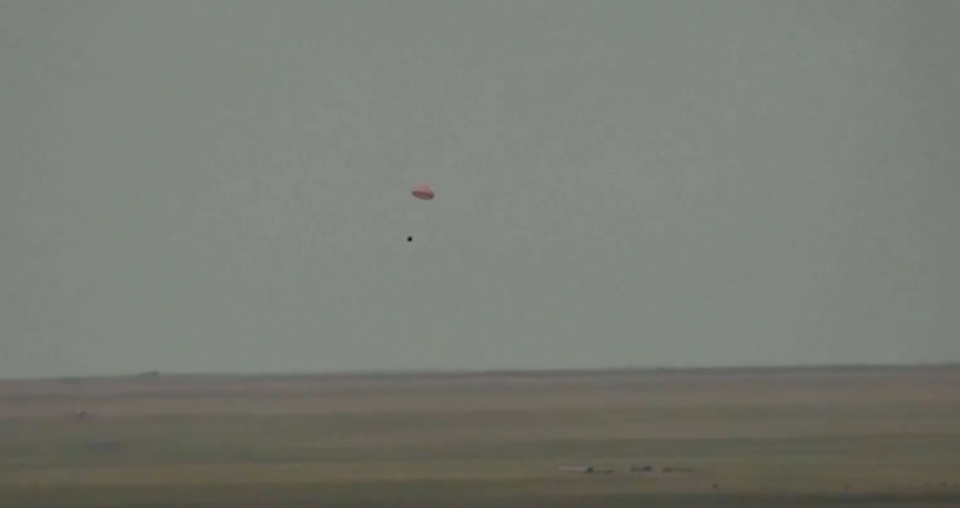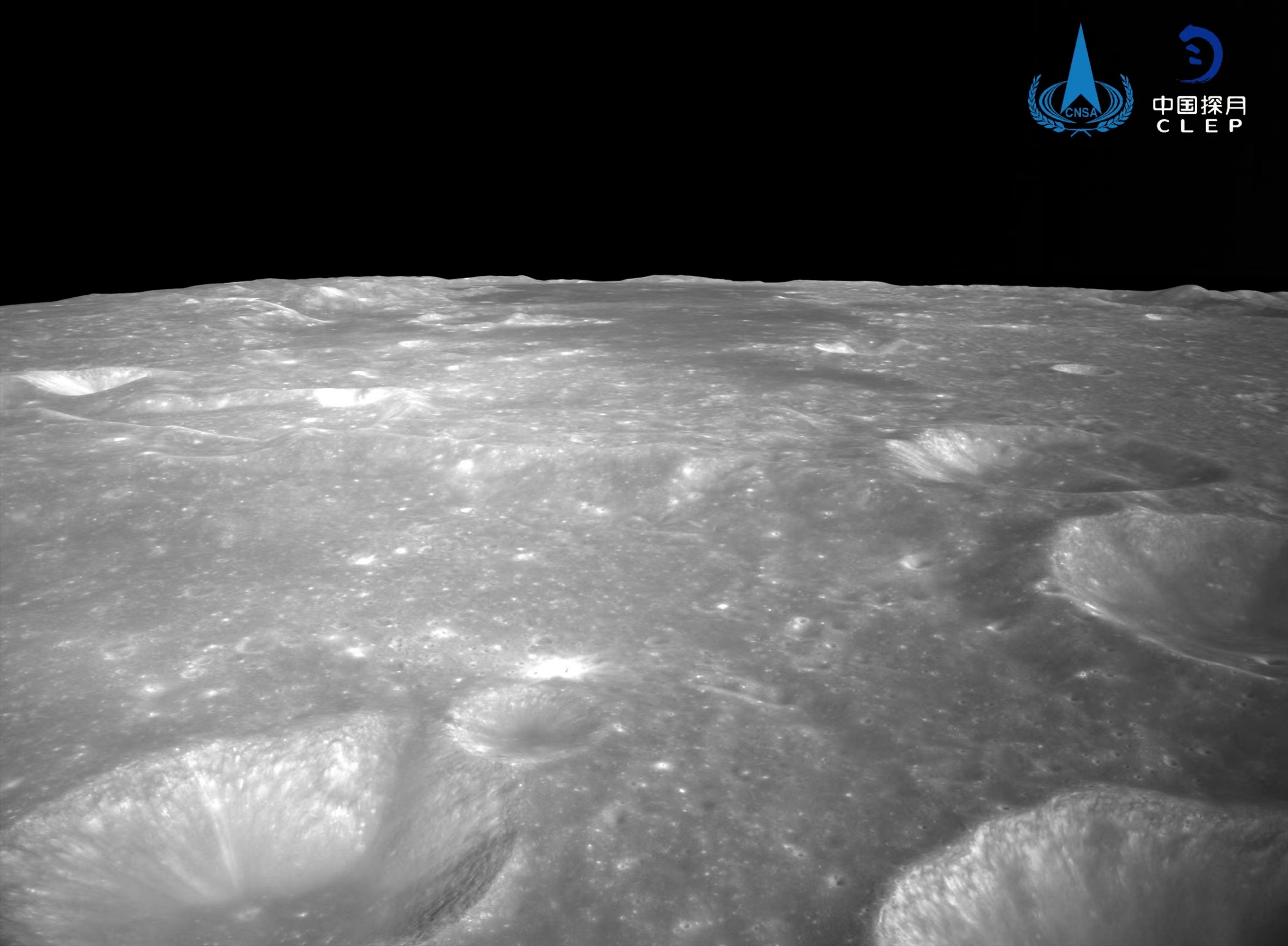As the space race hots up, China’s Chang’e 6 probe has landed safely containing untouched rock and soil – a mission no other nation has successfully completed.
Extraordinary footage shows the small, unassuming sack attached to a parachute as it descends to grassy Earth containing the first sample of the moon’s “dark side”.
The probe landed in northern China on Tuesday afternoon in the Inner Mongolian region.
Earlier this month the Change’e-6 robot landed on the dark -183C side of the moon before successfully retrieving rock and soil samples in what is a world-first.
The satellite touched on the lunar far side after descending from its orbit of around 124 miles above the moon’s surface to find a landing site.
China’s robot spaceship then collected mysterious samples while chillingly raising their national flag before attempting a descent.
Now the 2kg lunar samples have landed back on Earth – and scientists are desperate to get their hands on the goods.
The success of the mission sparks immediate concern among the West, with communist China now taking on the US in the heated space race.
The Director of the China National Space Administration confirmed the landing of samples. He said: “I now declare that the Change 6 Lunar Exploration Mission achieved complete success,”
Chinese scientists anticipate the returned probe will contain 2.5 million-year-old volcanic rock and trigger breakthrough research.
Geologist Zongyu Yue said: “the samples are expected to answer one of the most fundamental scientific questions in lunar science research: what geologic activity is responsible for the differences between the two sides?”
The near side is what is seen from Earth, and the far side faces outer space.
The far side is also known to have mountains and impact craters, differing from the flat appearance we see from Earth.
Nine past missions from other world superpowers have collected samples from the moon’s near side, but none have been able to successfully collect from the dark side.
China’s leader Xi Jinping sent a message of congratulations to the Chang’e team, calling it a “landmark achievement” in the country’s efforts “at becoming a space and technological power“.
While China have made history with the samples, they do not plan on stopping anytime soon – much to the West’s concern.
China was initially late to the first round of the space race, but Beijing is investing heavily in becoming the second nation to put humans on the Moon by 2030.
The Chinese-owned Tiangong space station was completed in late 2022, and has been permanently manned since then.
China has doubled the number of satellites it has in orbit since 2019, according to the US Defence Intelligence Agency.
This sparks fear among experts that China’s monster network of tracking satellites could snoop on Western military operations.
Why is the Chang’e 6 robot mission so important?
By Sayan Bose, Foreign News Reporter
THE far side of the moon, dubbed the ‘dark side’, has now become the focal point of numerous space exploration programs.
India, Russia, China and the US have all been engaged in space developments to study the far point of the moon.
It is deemed to be not only a compelling place for future space explorations but also a suitable site for lunar outposts.
Scientists believe it could be the most promising location for water-based ice, which will be key to future human habitation on the Moon.
It is also one of the moon’s most resource-dense areas.
The permanently shadowed places on the Moon could contain ice and other minerals, which would be vital resources for future explorers.
Scientists reckon there is an abundance of Helium-3 in so-called ‘cold traps’ littered across the south pole, which can help produce huge amounts of energy here on Earth.
The mountain peaks near the pole – which are illuminated for longer periods – could be used to provide solar energy to an outpost.
With an outpost on the Moon, scientists will be able to analyse water and other volatile samples dating to the formation of the Solar System.
For China, the landing of the Chang’e-6 lunar probe is an important milestone that the country will leverage to expand its space presence on the far side of the moon.
It will use the data collected by the space lander to allow Chinese astronauts to set foot on the moon by 2030.






